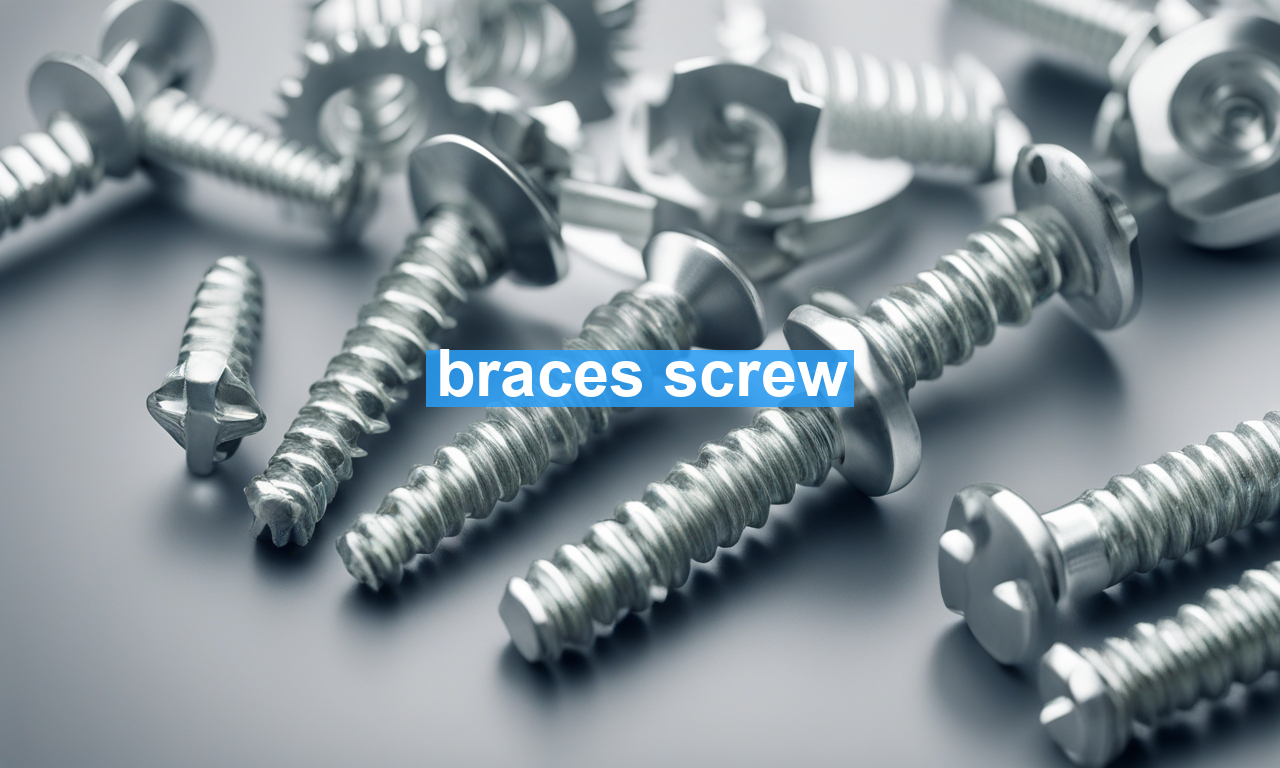Imagine this: you’ve just gotten your braces on, and you’re feeling a little overwhelmed by the array of components that come with them. That’s when the orthodontist mentions “brace screws.” Instantly intrigued or perplexed? You are not alone. The importance and function of brace screws in orthodontics cannot be underestimated. Whether you’re already undergoing treatment or considering braces, understanding how these tiny components work can provide valuable insights into your treatment journey. Let’s take a fascinating dive into the world of brace screws!
What Are Brace Screws?
Brace screws, often referred to as mini-implants or temporary anchorage devices (TADs), play a pivotal role in contemporary orthodontics. Unlike traditional brackets and wires, these screws are not visible from the outside. They serve as strong anchors for moving teeth in desired directions, improving the precision and efficiency of orthodontic treatments.
Why Are Brace Screws Important?
The integration of brace screws offers orthodontists a higher level of control and predictability. Unlike other methods, which rely on patient cooperation, these screws greatly enhance the ability to achieve precise tooth movements independently of any external influences. The following benefits contribute to their increasing significance:
- Reduced Treatment Time: By offering fixed anchor points, brace screws can significantly shorten the treatment timeline.
- Improved Outcomes: These screws can achieve more complex movements, leading to better results and patient satisfaction.
- Increased Comfort: With shorter and fewer orthodontic visits, thanks to the efficiency of brace screws, the overall treatment becomes more comfortable for patients.
How Are Brace Screws Used?
The process of using brace screws is surprisingly straightforward but requires professional expertise. Here’s a step-by-step look at how they are employed in orthodontic treatments:
Step 1: Consultation and Planning
Before any treatment begins, your orthodontist will conduct a detailed consultation to assess whether brace screws are a viable option. Every treatment plan is customized, and incorporating these screws can significantly refine the approach.
Step 2: Screw Placement
The placement of brace screws is a minimally invasive procedure, typically completed within minutes at the dental office. Using local anesthesia, the orthodontist will carefully insert the screws into the bone between your teeth. This anchorage point serves as a firm base for facilitating specialized tooth movements.
Step 3: Active Treatment
Once the screws are in place, your orthodontist begins using them as anchor points to guide the movement of your teeth. This phase may involve regular adjustments over weeks or months, depending on your specific treatment plan.
Step 4: Removal
Once the desired tooth movement is accomplished, removing the screws is a simple process. It is usually quick and causes minimal discomfort, marking the success of the treatment phase in which they were used.
Common Concerns About Brace Screws
Given their crucial role, it’s natural to have questions or concerns about brace screws. Here are some of the most frequently asked questions:
Are Brace Screws Painful?
The short answer is no, brace screws are generally well-tolerated. The initial insertion and removal of the screws might involve slight discomfort, but the procedure is minimally invasive and typically requires only local anesthesia.
What Materials Are Used in Brace Screws?
Brace screws are commonly made from high-quality titanium, known for its strength and biocompatibility. Studies have confirmed their safety in dental applications, making them reliable for use in orthodontic treatments.
Can Anyone Get Brace Screws?
While many patients are candidates for brace screws, your orthodontist will determine suitability on an individual basis. Factors like bone density, health status, and specific treatment needs are critical in making this decision.
Further Reading and Resources
For those interested in delving deeper into the fascinating world of orthodontics, the Journal of Dentistry offers a variety of articles and studies on the latest advancements in dental technology, including the role of brace screws. Another great resource is the American Dental Association, which provides extensive healthcare information and patient resources on maintaining oral health during orthodontic treatment.
The use of brace screws is a brilliant innovation in orthodontics, unlocking new levels of precision and patient comfort. As with all medical treatments, staying informed and consulted by certified professionals ensures the best possible outcomes. Whether you’re already sporting braces or contemplating them, brace screws could very well be the pinnacle of your orthodontic care journey.

